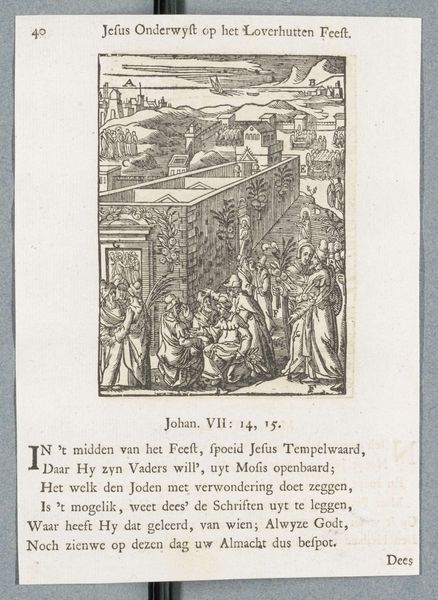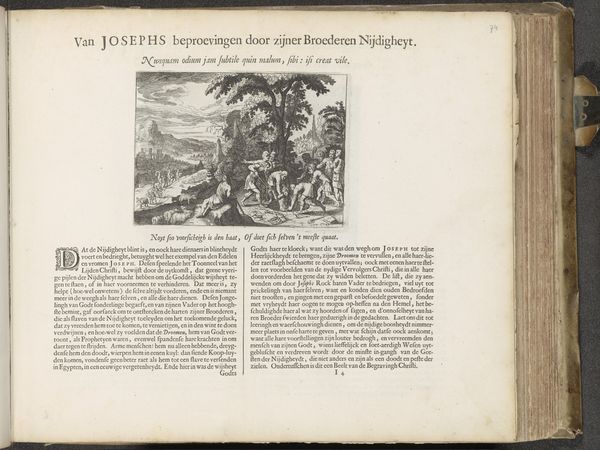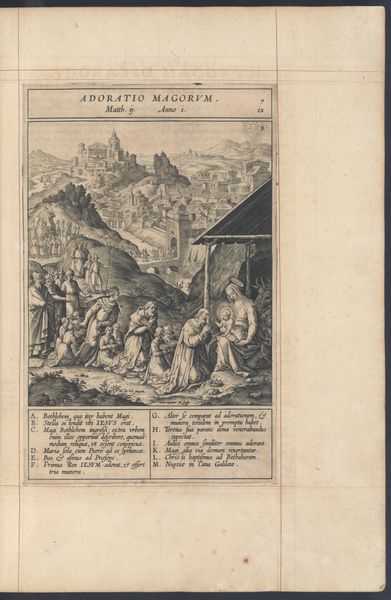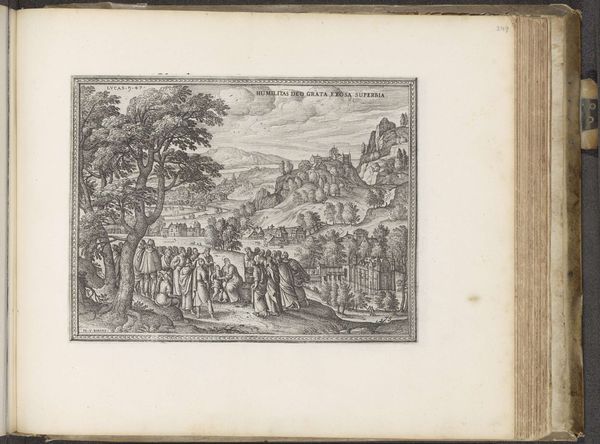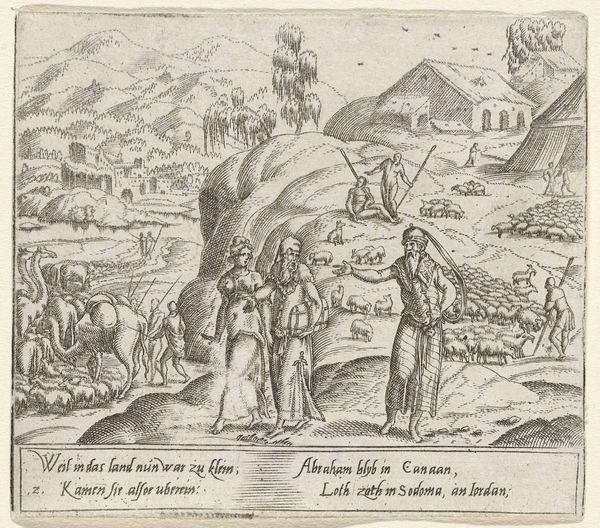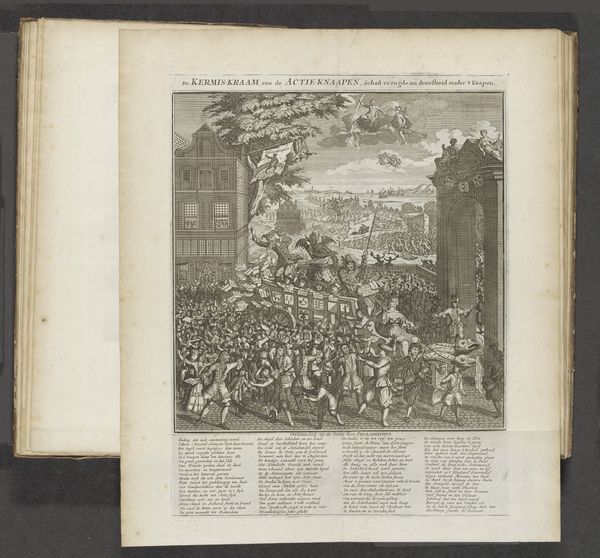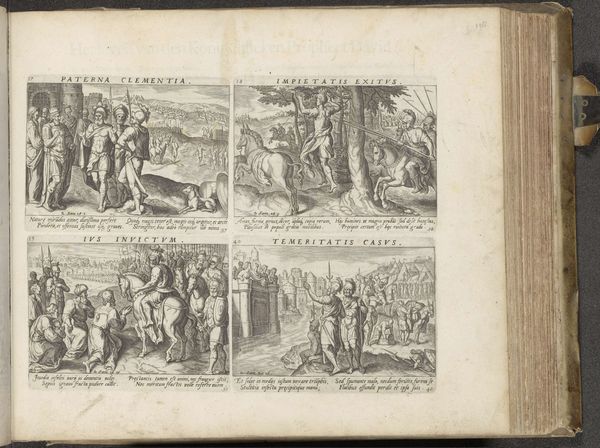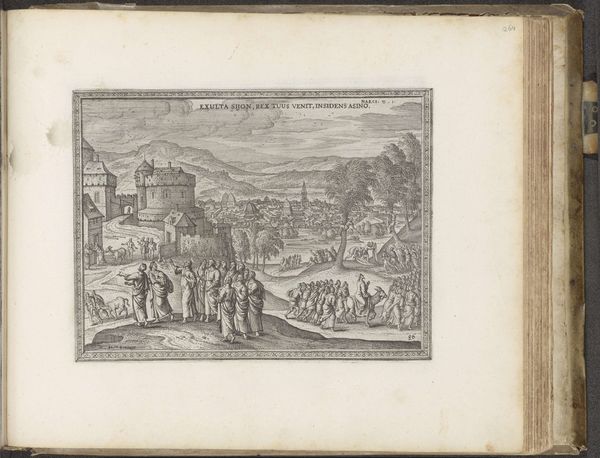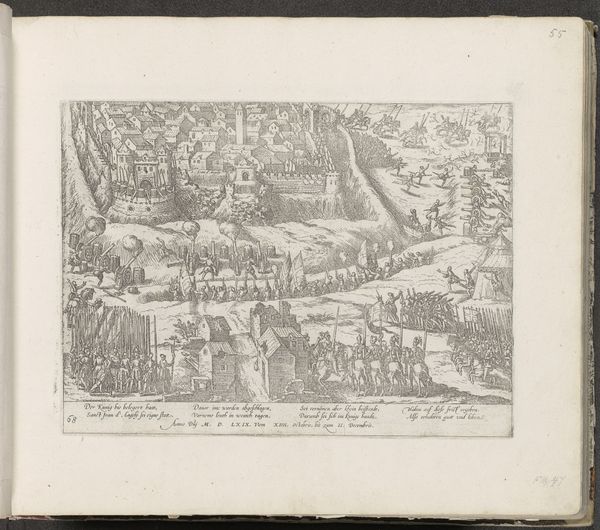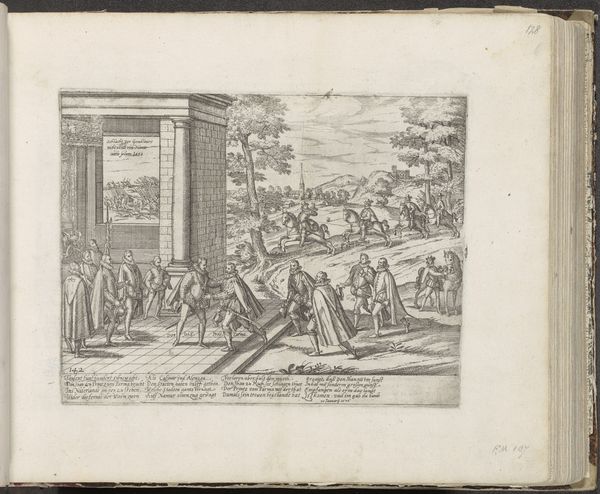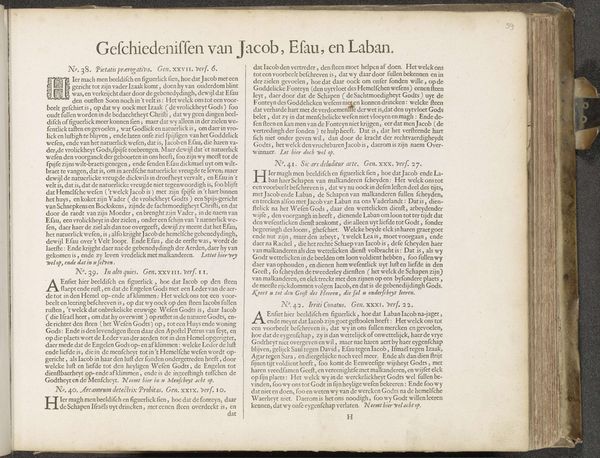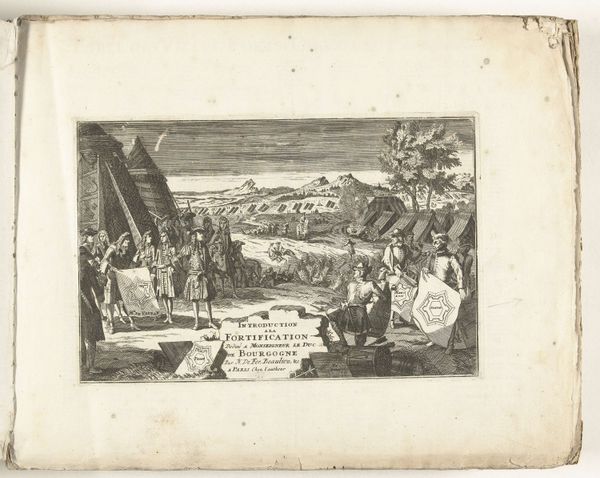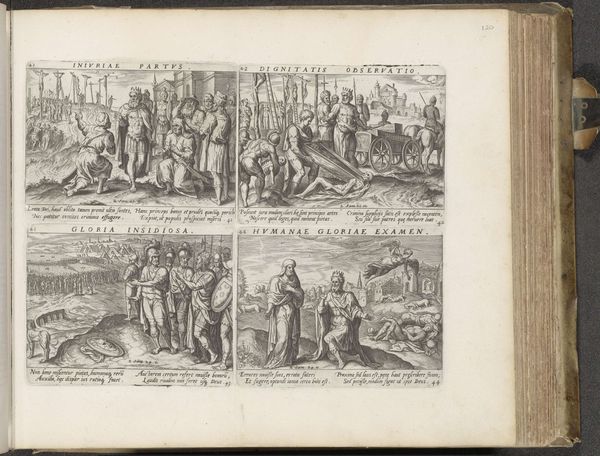
Christus over het huwelijksverbond / Christus te gast bij Simon de Farizeeër Possibly 1550 - 1654
0:00
0:00
print, engraving
#
narrative-art
# print
#
landscape
#
figuration
#
coloured pencil
#
line
#
northern-renaissance
#
engraving
Dimensions: height 150 mm, width 111 mm, height 147 mm, width 110 mm, height 294 mm, width 370 mm
Copyright: Rijks Museum: Open Domain
Curator: Here in the Rijksmuseum, we have a print titled "Christus over het huwelijksverbond / Christus te gast bij Simon de Farizeeër," attributed to an anonymous artist, and dated somewhere between 1550 and 1654. It presents two separate scenes, side-by-side, each a distinct narrative. What catches your eye first? Editor: Well, right off, there's this curious feeling of constrained energy, like looking at miniatures brimming with unspoken tension. The landscapes, while present, seem almost secondary to the gatherings of people, all rendered in such crisp, dark lines. I find that a bit unsettling. Curator: Indeed. Looking at the left scene, we see Christ addressing a group concerning marriage, while the right depicts Christ dining at the house of Simon the Pharisee. It’s worth considering the context of printmaking in that period. These images were widely circulated, intended for moral instruction as much as aesthetic appreciation. Editor: That makes sense. It's like a condensed drama ready to be consumed, or maybe even weaponized. Thinking about it now, those sharp lines serve to etch the stories into your mind. Did the anonymous artist have particular social issues in mind or theological debates to poke with these scenarios? Curator: It's highly likely. Consider the focus on domestic and social codes. The sanctity of marriage being debated on the left and the accepted hierarchy of religious acceptance being silently protested with a cleansing on the right... it reflects ongoing anxieties about religious and social stability. Prints offered a means to engage a broader populace in those discussions. Editor: So, the medium *is* the message then. The prints themselves facilitate this sort of cultural back-and-forth on potentially volatile topics, and in a relatively accessible manner at that. It is pretty fascinating that something rendered in such a reproducible form can have such resonance! I'm not so unsettled anymore. Curator: Precisely! The dual nature, that of artwork and medium, reminds us how deeply enmeshed art is within its contemporary social framework. Editor: Right, what a testament to its clever simplicity. The stories might remain somewhat opaque to us now, yet their construction and dissemination is far from subtle.
Comments
No comments
Be the first to comment and join the conversation on the ultimate creative platform.
